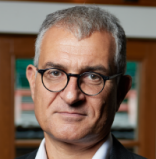After registering dynamic growth in the first half of the year, demand for European exchange traded funds (ETF) slowed considerably in August. The inflows of €3.5 billion marked the lowest level seen in a one-month period since September 2016. The reasons for the slackening pace of inflows were many: net inflows to equity ETFs hit a 11-month low, demand for bond ETFs remained subdued for the second month running, and commodity exchange-traded products (ETPs) suffered net redemptions for the first time in eight months.
Money market ETFs, which feature short-term assets traded by banks, also saw negative flows, according to Morningstar ETF estimates. But overall assets under management (AUM) increased slightly from €613 billion at July 31 to €615 billion at the end of August.
Funds tracking the largest US companies enjoyed the highest inflows in August, a rare feature in a year that has seen European index-trackers dominate sales. ETFs focusing on European financial firms and indices continued to see above-average inflows in August after taking in record subscriptions in July. The demand for these highly cyclical assets indicates that investors remain confident on the growth prospects of the eurozone economy.
Inflows into global emerging-markets equity ETFs continued to feature prominently, but these were lower than previous months. A single ETF, Amundi ETF MSCI Emerging Markets (AEEM), was the main driver of inflows, raking in €370 million and thus accounting for virtually all the net inflows of the category. The ETF has a three-star Morningstar rating.
Inflows into ETFs tracking Germany’s DAX exchange continued for the second month running as the German equity market continues its strong performance.
Commodity exchange-traded products suffered the highest outflows by category in August. Net sales were the second-highest on record in a one-month period after December 2016, with ETFs tracking oil prices the worst hit.
Funds tracking the eurozone’s largest companies suffered net outflows in August for the first time since October 2016.
iShares Still on Top
Ranked by ETF providers, iShares topped the list, pulling in net €2 billion, but this was well below the previous month’s levels. In August, demand was subdued for iShares equity ETFs, which took in net €1.1 billion. Investment in iShares bond ETFs remained stable at €860 million.
BNP Paribas ranked a distant second, with net inflows of €390 million, which targeted equity ETFs exclusively.
Inflows to ETFs provided by Swiss bank UBS were subdued when compared with the high demand so far this year. This was attributable to receding demand for equity and bond products alike. For the year to date, UBS has seen the highest growth rate among the large and medium-sized ETF providers in Europe, expanding assets under management by close to 30%.
ETF Securities, which focuses mainly on commodity exchange-traded products, reeled under heavy outflows from energy products and precious-metals funds also suffered outflows.
Deutsche Asset Management suffered the first negative month this year, shedding net €80 million with more than €540 million exiting its MSCI World ETFs. But it enjoyed inflows of close to €500 million in its bond funds, which limited the damage somewhat.
Amundi also suffered outflows from its equity ETFs, which were not offset by inflows to its bond ETFs.
Strategic or smart beta ETFs, which aim to combine the low costs of passive investing with the outperformance of active management, also witnessed outflows: risk-oriented smart beta ETFs lost 27.4% of their assets in the past 12 months.
A final look at the most and least popular ETFs highlights the wider trends in the sector: Europe’s largest ETF and one holding a Gold Rating by Morningstar, iShares Core S&P 500 (CSSPX), saw net inflows of €390 million, while db x-trackers MSCI World (XDWD) - which has a Silver Rating - saw €520 million withdrawn from the fund.






























